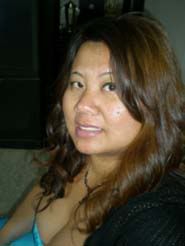US - Laos Policy, Memorial Events, Held in Congress
Friday, May 25, 2012
National veterans' memorial ceremonies and policy events are being held in Washington, D.C., and the U.S. Congress, to highlight the service, and ongoing plight, of Lao and Hmong veterans who served in Laos during the Vietnam War. Thousands of Laotian and Hmong-American veterans, and their refugee families from across America, are participating along with U.S. veterans of the Vietnam War. Laotian and Hmong-Americans from across the United States are attending with delegations traveling from California, Arizona, Nevada, Washington, Minnesota, Wisconsin, Pennsylvania, Massachusetts, Connecticut, Rhode Island, Florida, Texas, Oklahoma, North Carolina, South Carolina, Georgie, Alabama, Louisiana, and other states. “We have come from across the United States to pay tribute and remember our fallen soldiers who have died to secure the freedom that we all enjoy today,” said Colonel Wangyee Vang, President of the Lao Veterans of America Institute (LVAI). The LVAI and the Lao Veterans of America are the nation's largest Lao and Hmong veterans organization with chapters across the United States. “It is also important to remember that our people, who were left behind in the jungles of Laos, are still suffering from the causes of the Vietnam War,” Colonel Wangyee Vang stated further. Meetings and special events are continuing in the U.S. Congress this week, regarding domestic and international policy matters of concern, including veterans, human rights, refugee, religious persecution, trade and economic issues. On May 11, a wreath-laying and memorial service, was conducted at the Lao Veterans of America (LVA) monument in Arlington National Cemetery to honor the Lao and Hmong veterans, their families, as well as the American clandestine advisors, who served in defense of the Kingdom of Laos, and U.S. national security interests, during the Vietnam War. “I am very honored and pleased that we are once again gathered here today at Arlington,” said Dr. Jane Hamilton-Merritt, Ph. D., a Southeast Asia scholar, former Vietnam War-era journalist and author. At events in Arlington, Dr. Hamilton-Merritt read excerpts from her book "Tragic Mountains: The Hmong, The Americans and the Secret Wars for Laos" (Indiana University Press) and served as a keynote speaker at the Arlington National Cemetery Memorial events. “A U.S. Department of Defense Joint Armed Forces Honor Guard, U.S. Army wreath-bearer, and bugler, participated in the ceremony at Arlington National Cemetery to assist in honoring the Lao and Hmong veterans and their families,” said Philip Smith, Executive Director of the Center for Public Policy Analysis (CPPA) in Washington, D.C. http://www.cppa-dc.org “Following the official wreath-laying ceremony at the Lao Veterans of America memorial in Arlington, the U.S. Department of Defense’s (DOD) honor guard also posted colors, and the bugler played ‘Taps’, in memory of the Lao and Hmong veterans and their American military and clandestine advisors…,” Smith observed. “With covert American assistance, Lao and Hmong special forces operated in defense of the Kingdom of Laos and U.S. national security interests,” Smith commented. Flowers were laid at a veterans' memorial ceremony held at the Vietnam War Memorial on May 12. Event speakers are highlighting the importance of legislation (H.R. 3192), introduced by U.S. Congressmen Jim Costa (D-CA), and Frank Wolf (R-VA), to grant burial benefits to Lao and Hmong-American veterans at U.S. national cemeteries. Event cosponsors include the LVAI, CPPA, LVA, the U.S. DOD, Army, Air Force, Arlington National Cemetery, Counterparts, Hmong Advance, Inc., Hmong Advancement, Inc., and Members of the U.S. Congress. Speakers at the veterans’ memorial events include: Wangyee Vang, LVAI; Philip Smith, CPPA; Jane Hamilton-Merritt; Mike Benge, former POW; Hugh Tovar, Former CIA Station Chief, Laos; Toua Kue, LVA.; D. L. Hicks, U.S. Special Forces Association, Texas; Christy Lee, Hmong Advance, Inc.; U.S. Congressman Jim Costa (D-CA); U.S. Congressman Duncan Hunter (R-CA), and, Members of the U.S. Congress. The events also commemorate National Lao and Hmong Recognition Day ceremonies held annually in May in Washington, D.C. and across the United States. Contact: Ms. Maria Gomez, Mr. Phil Marieo or Mr. Philip Smith CPPA - Center for Public Policy Analysis info@centerforpublicpolicyanalysis.org Tele. (202) 543-1444 http://www.centerforpublicpolicyanalysis.org Source
Read more...



